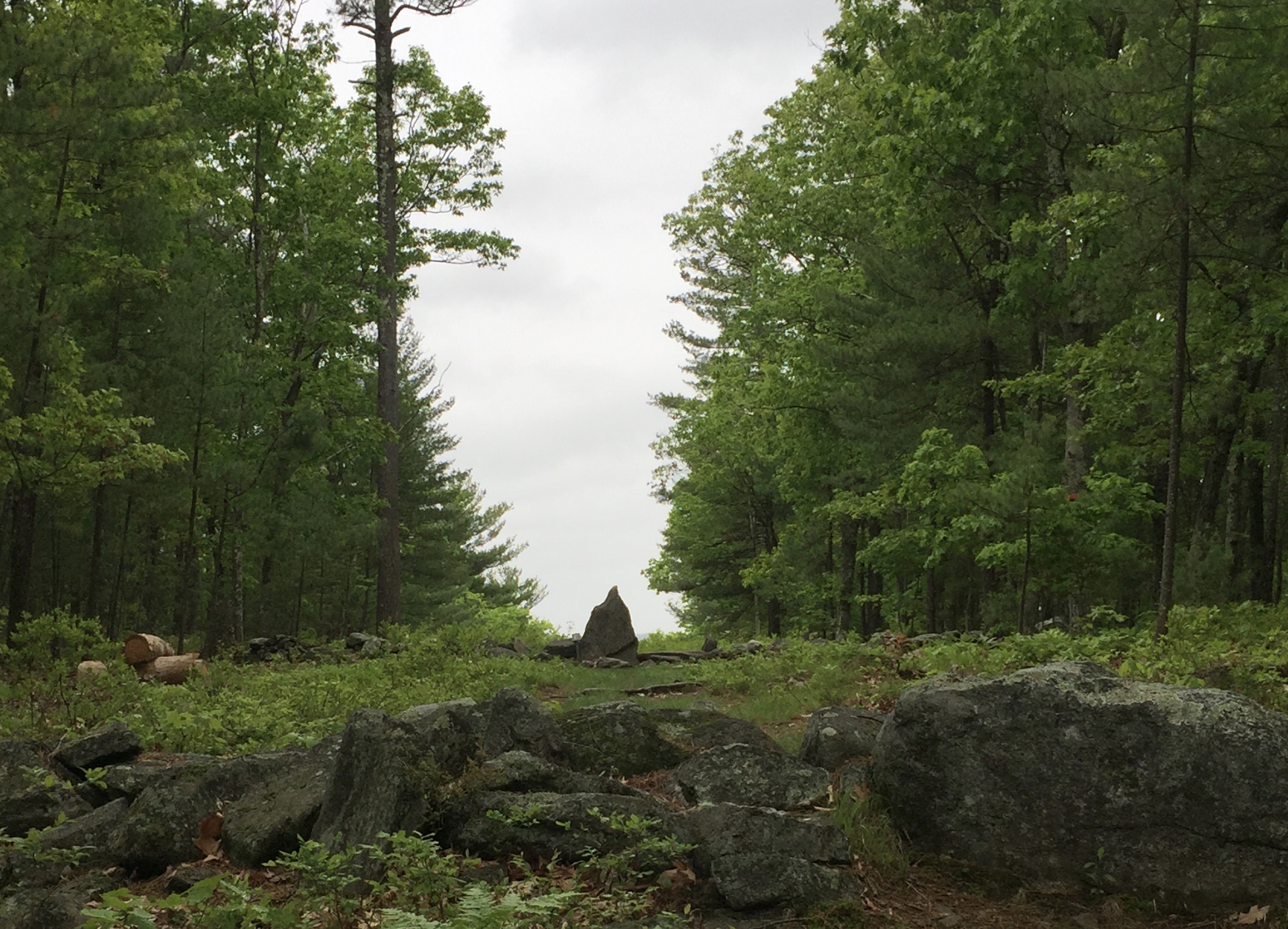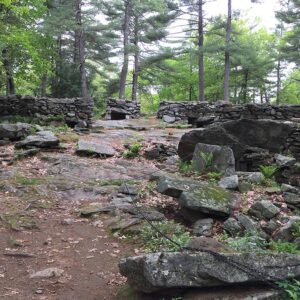On a wet and cloudy May afternoon I turned into the sandy driveway and parking lot, stepped out of the car and looked around. Tall pines and deciduous trees surrounded me, and small boulders marked a path that wound up the hill toward a dark cabin, barely visible through the trees. Was I in the right place? This looked like a campground entrance. Was this “America’s Stonehenge,” where you could see standing stones and stone circles that dated back to a prehistoric age?
In my novel Wild Mountain, Gus, the mountain hermit, discovers an ancient stone circle, a secret spot where spiritual and astronomical energies converge, and now I was excited to see for myself what I had written into my story. But while part of me was filled with awe and anticipation, another part was skeptical. What if this place was just a tourist trap?
And sure enough, when I made my way up the path and entered the cabin, I was greeted by displays of “America’s Stonehenge” mugs, key rings, refrigerator magnets, postcards, and a video. Narrated in the style of Orson Welles predicting a Martian invasion, the video gave less information than I had already got on the internet.
I stepped out the back door onto another hilly path. Here were rocks and boulders galore, and as I ascended the continuing hill, I could see a series of stone structures – half-walls, great slabs of rock, and little caves on an open ledge. When I went closer, I saw that the caves formed rooms or chambers.
Now I was beginning to sense a little of the awe – maybe this really was some very ancient place – marred only by all the signs, arrows, and numbers posted on each artifact.
Around the bend and walking onto the ledge, I could peek into the stone chambers. Here was the “Oracle Chamber,” and here the “sacrificial chamber,” both with their mysterious functions.
The pathway extended up to a plateau and a pyramid-shaped stone marking the opening into a field. Through the center of the field, with its dome of bright sky and border of tall trees, a mowed section allowed a view to the distant horizon. I read in the guide map that I was on the “ astronomical trail.”
This long and winding trail passed stones that marked the equinoxes, the winter solstice sunset, the sunrise at summer solstice, true north, and so on.
Alignment. Eons ago human beings had here denoted the changing of seasons, the transforming of night to day and day to night in the same way these changes happen today. This was a place where the timeless rhythm of earth and sky and our place within that rhythm were marked by an alignment of stones. I was beginning to feel an alignment within myself, a clearing in my brain and an opening of spirit, that merging of human and nature that to me is nothing short of divine. Maybe my character Gus was onto something.
There are stones marking astronomical events throughout New England. “America’s Stonehenge” is in Salem, Massachusetts America’s Stonehenge
